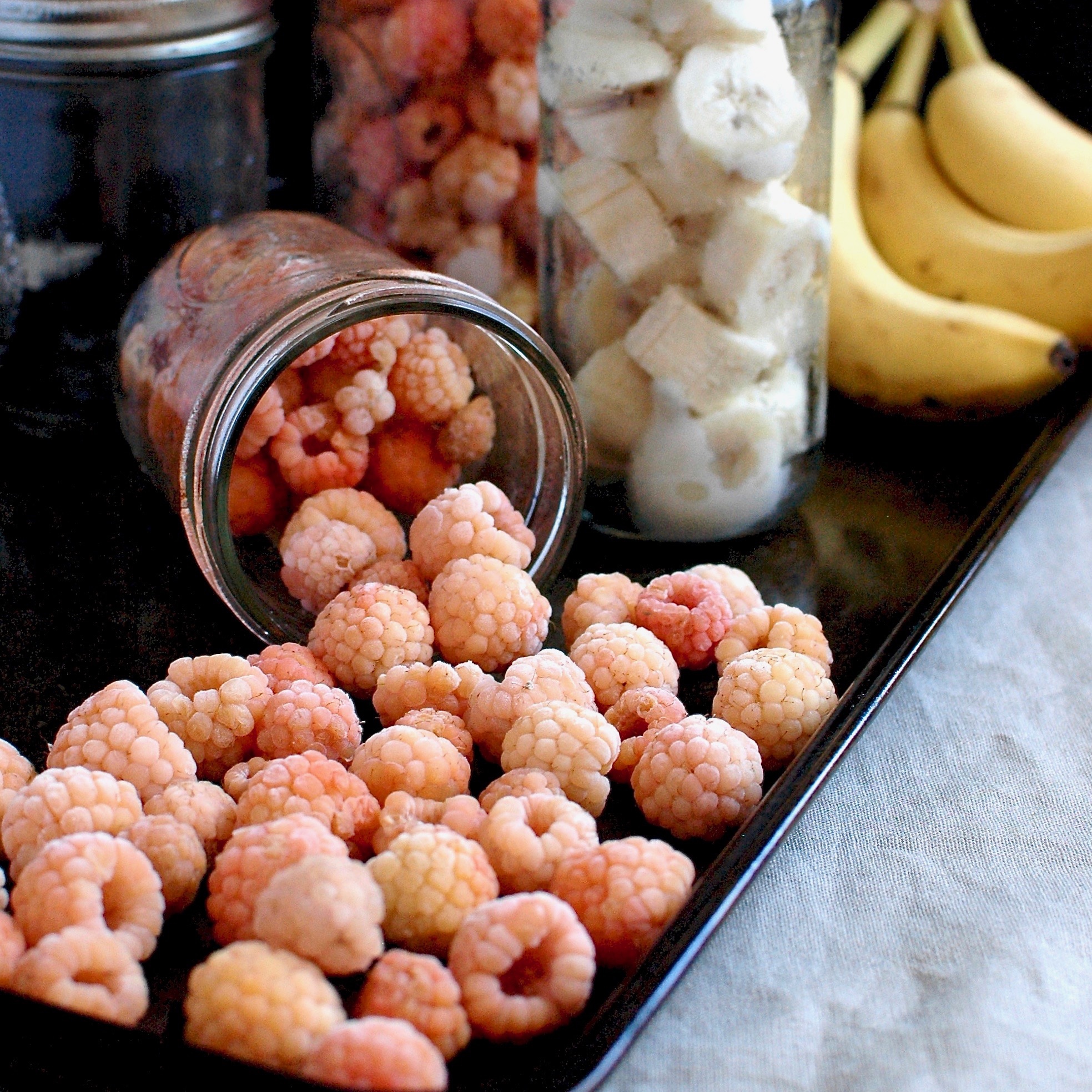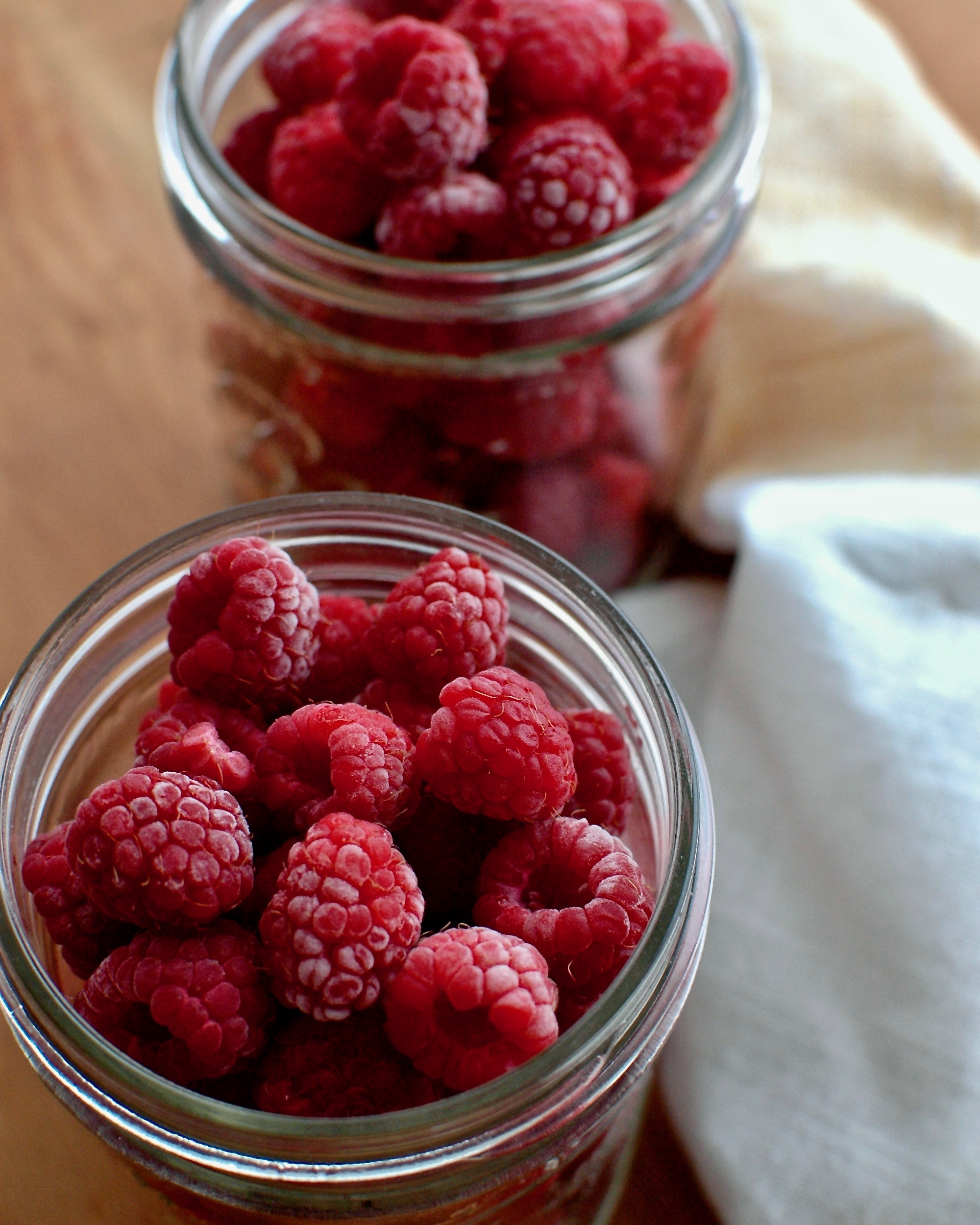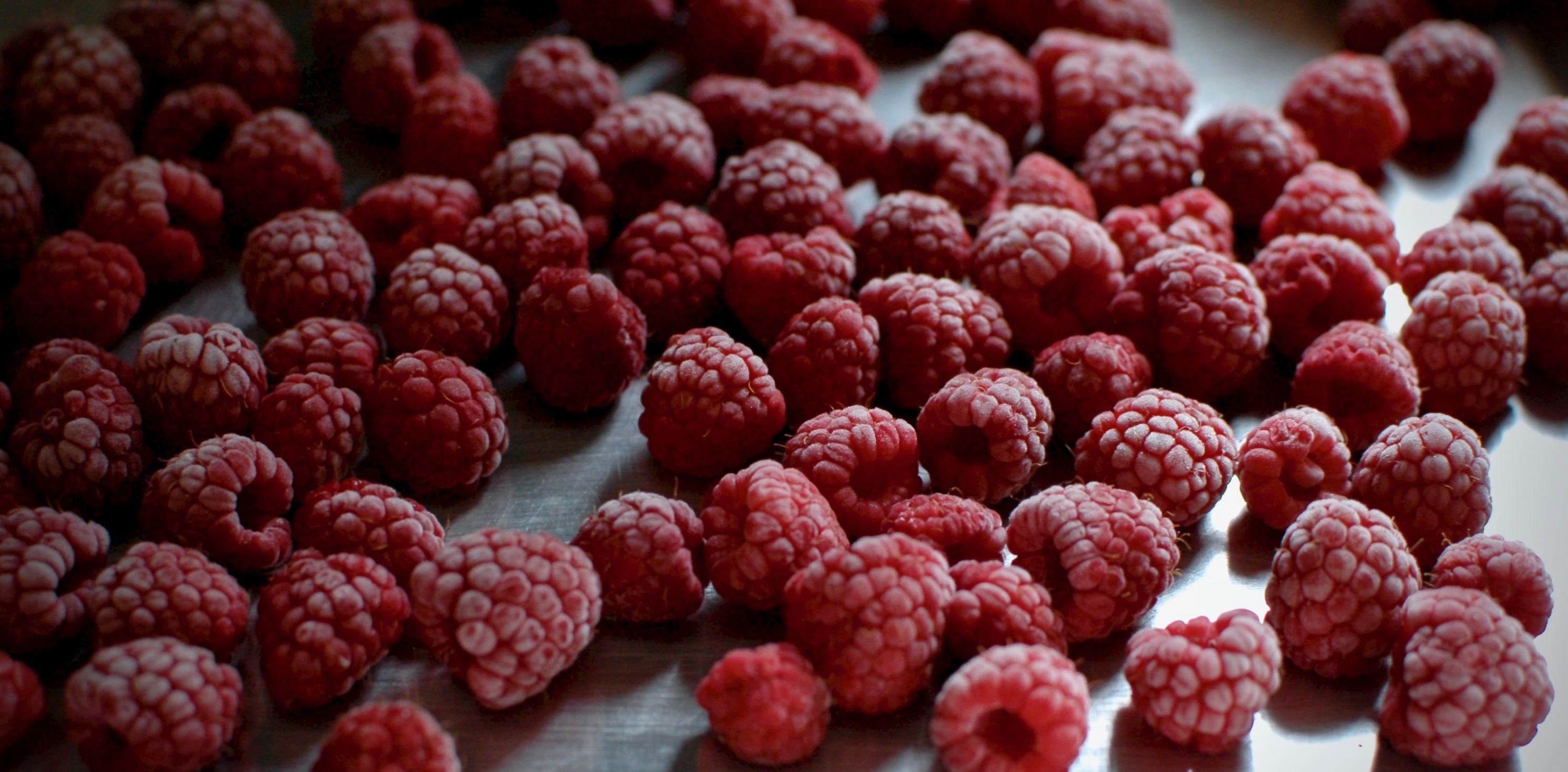While I’m not the biggest fan of the super hot heat wave we’ve got going on over here in the PNW this week, I’m completely head over heels in love with all the fresh berries popping up at the farmers market. Summer is the best time for blueberries, raspberries, strawberries, etc… not to mention my favorite fruit of all: tomatoes 😛
And it’s no secret, food tastes best when it’s at its freshest, in season.
So how do you save a little bit of that magic for the colder months without buying out-of-town fruit shipped in from afar or plastic packaged frozen fruit?
Glad you asked. You freeze it yourself. Or you can it. Freezing food in jars is my go-to food preservation method (next to fermentation), and it’s easier than you might think. And this doesn’t just apply to fresh fruit; there are so many items you can freeze for later.
But, you can’t put glass jars in the freezer…right?
Actually, yes, yes you can! I’ve been doing it for years now and only broken one 32oz jar in the process. And that was because the jar was too large and shouldn’t have gone in the freezer in the first place. (More on that detail in a bit.)
Additionally, you can freeze Tupperware that has a plastic top and a glass bottom. Just give it plenty of time to thaw out before you open it — I’ve had the plastic locks snap in half on me before because I was too impatient to wait for them to thaw.
In the words of Julia Child, “don’t be afraid!” Okay, let’s get freezin’…😬
Some important tips for freezing food in jars:
- Leave enough headspace: This is something you might be aware of if you’ve got mason jars or other canning jars around the house. When you freeze food in jars, you need to leave plenty of room between the food and the top to give the food enough space to expand as it freezes. Liquids, in particular, expand more as they freeze. Most mason jars will have a “fill to here” line near the top of the jar, just under the lip. When freezing, you need to be wary of that line and make sure not to fill above it.
- Only use wide-mouth or straight-mouth jars: As the food in your jar freezes, it will expand slightly, putting a lot of pressure on the glass container. If there is a ridge, if it’s a standard-mouth mason jar and it’s got “shoulders,” those curves are weaker spots in the glass and the jar will be more prone to break. To avoid, only use jars of which the sides are straight up and down. Wide mouth jars are best.
- Don’t use jars larger than 24oz: The jar I broke back in the day was a 32oz (quart) jar, with a lip/shoulder, and I was freezing broth which expands a lot. If I’d followed my first two guidelines, I wouldn’t have tried freezing food in this jar. Wide mouth 24oz (3-cup) jars are great for freezing. I also frequently use wide-mouth 16oz (pint) jars, 8oz jars (without a shoulder) and some 4oz-ers.
- Label the tops (very important!): This is less about avoiding broken glass and more about remembering what the heck you’ve put into that jar in the first place. 😛 If you freeze as many jars as I do, your freezer will start to look like a miniature ice city of frosty skyscrapers (that sounds much more precarious than it is, I swear!). Sometimes food is frozen for nearly a year, and I will never remember when I froze it or what it was unless I label the top! Also, it protects against food waste 🙂
- Take stock from time to time: I tend to stock my tiny freezer to the gills with food in jars, so it’s important to take a few minutes occasionally and pull all of it out to see what I’ve got. It’s exciting, you never know what you might find, and you might be pleasantly surprised about something you completely forgot you froze! It’s the little things. (Are we sensing a forgetfulness theme here?)
A few more tips for best freezing results
- Let cool before putting in the freezer. This will give the food and glass a chance to get to the same temperature before shocking it in the freezer. Sometimes I’ll leave food in the fridge overnight and then transfer it to the freezer the next day. You can also let it come to room temp on the counter, and then freeze.
- If freezing in screw-top mason jars, leave the lids a bit loose. I’m not sure how well this works, but it’s worth mentioning. In the case that food is filled too high in the jar and it needs to expand, if the lid is sealed tightly there will be more of a chance of breakage. A looser top means in rare cases, this might protect against breakage because the frozen food will have a place to go.
Freezing vegetables in mason jars
- Fresh vegetables: Small veggies are best for freezing. For example, if you’ve got some freshly plucked English peas (those things take forever to prep!) you’ll want to make sure you are storing them properly. Lay the peas in an even layer on a baking sheet. Pop the sheet into the freezer for about an hour. Once frozen, transer the vegetables from the baking sheet to a glass jar. Seal and store for up to one year.
- Vegetable broth: Let cool, fill in jars to fill-line (make sure to use only jars with straight sides and no larger than 24 oz (3 cups). Seal loosely and freeze.
- Veggie scraps: Clean veggie scraps, tear into small pieces and place in a clean jar. Seal and freeze.
- Herbs: I usually don’t have any herbs leftover, but if you want, you could turn extra herbs into pesto and freeze in ice-cube trays. (I have this awesome stainless steel ice-cube tray that should last me forever – highly recommend.) Thaw slightly and transfer herb cubes to a larger jar or Tupperware container. Toss individual cubes into soups or other dishes for added pops of flavor.
How to freeze almost anything else in a glass jar (and sometimes sans jar)
- Berries: Rinse berries and dry thoroughly. Lay in an even layer on a baking sheet. Put the baking sheet in the freezer for a couple hours, until berries are frozen. (No need for throw-away liners, plastic wrap, etc.) Remove from the freezer, transfer fruit to jars. Seal them up, label them, put back in the freezer.
- Larger fruit: Clean and dry fruit. Peel (if desired), remove any pits and chop into bite-sized pieces. Lay in an even layer on a baking sheet … repeat the rest of the steps from Berries.
- Cooked beans: Fill jars to the fill line and make sure beans are mostly submerged in their broth. Loosely seal jars and store in a single layer in the freezer (don’t stack), if you’ve got a traditional cabinet freezer.
- Pizza dough: After dough has risen, punch down to release extra air. Toss with olive oil and place in a Tupperware. Seal and put in the freezer. (*I’ve got a round glass-bottom Tupperware that is the perfect size for one ball of dough. If you don’t have that, you can let it freeze in a bowl, take it out of the freezer once frozen, remove from bowl and wrap in a cloth for longer storage). The dough should thaw in the fridge in about 24 hours. Let sit at room temp for at least an hour before cooking.
- Bread: Slice freshly baked loaves into halves or thirds (or keep whole, depending on size). Place in a cloth bag or wrap in a cloth, put into the freezer. Take out one piece at a time to thaw and use as desired. Frozen bread will keep for a little over a week like this before starting to taste “freezer-y.”
- Jam/preserves/chutney: Fill to fill-line in smaller-sized jars. Close lids loosely and let cool in the fridge or on the counter. Place in freezer. Preserves will easily keep for a year like this.
- Leftovers (like curry, thick soups, purees, etc.): Let cool, place in jars to fill-line, seal loosely and pop in the freezer. These will keep for about a year this way.
- Fruit scraps: Same as veggie scraps.
- Bones: Place bones in a jar, seal, and freeze. Use to make bone broth or congee at a later date. These will also keep for months this way.
- Fat (duck fat, clarified butter, pork fat before it’s been rendered, etc.): These freeze beautifully. I usually freeze these things in smaller sized jars (4oz) and thaw as needed.
- Parmesan cheese rinds: Place rinds in a glass jar and store for up to 6 months. I like to stockpile my rinds and then use them to add richness to vegetable broths, soups, stews and especially slow-cooked tomato sauces.
Nick and I have been virtually plastic free for over a year now 🙅🏽 and freezing food in jars has been such a lifesaver to our lifestyle. It helps us preserve the food we prepare for a later date so there’s less chance of spoilage and food waste. It also allows us to store food at its freshest and enjoy it later in the year. Fresh stewed tomatoes in December? Yes, please. Pumpkin puree in May? Don’t mind if I do!
I should take a picture of my freezer at the height of summer so you can get a good idea of what types of foods we store. 😂
Got questions about freezing food in jars? Leave a comment below!





